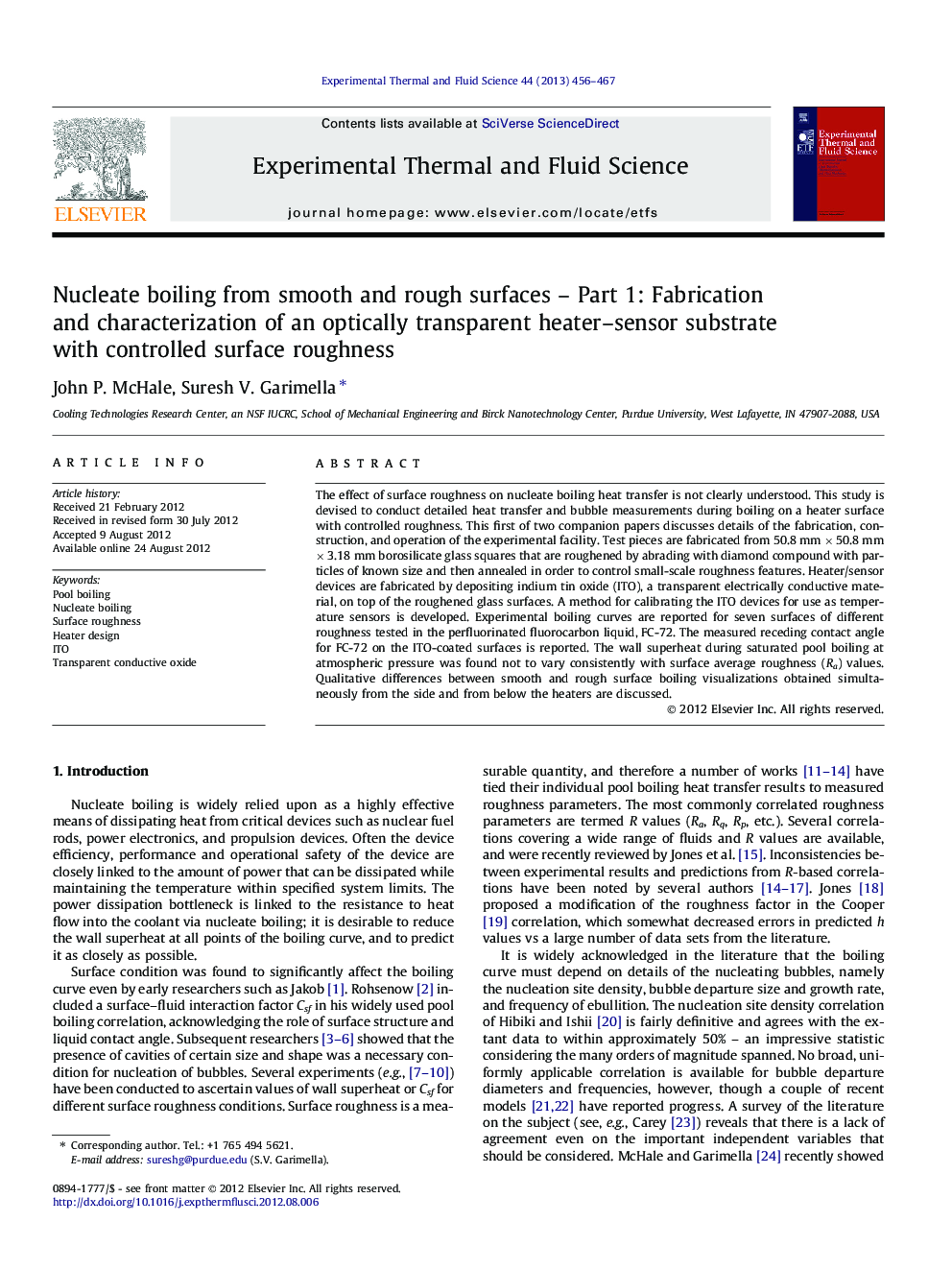| کد مقاله | کد نشریه | سال انتشار | مقاله انگلیسی | نسخه تمام متن |
|---|---|---|---|---|
| 651531 | 1457432 | 2013 | 12 صفحه PDF | دانلود رایگان |

The effect of surface roughness on nucleate boiling heat transfer is not clearly understood. This study is devised to conduct detailed heat transfer and bubble measurements during boiling on a heater surface with controlled roughness. This first of two companion papers discusses details of the fabrication, construction, and operation of the experimental facility. Test pieces are fabricated from 50.8 mm × 50.8 mm × 3.18 mm borosilicate glass squares that are roughened by abrading with diamond compound with particles of known size and then annealed in order to control small-scale roughness features. Heater/sensor devices are fabricated by depositing indium tin oxide (ITO), a transparent electrically conductive material, on top of the roughened glass surfaces. A method for calibrating the ITO devices for use as temperature sensors is developed. Experimental boiling curves are reported for seven surfaces of different roughness tested in the perfluorinated fluorocarbon liquid, FC-72. The measured receding contact angle for FC-72 on the ITO-coated surfaces is reported. The wall superheat during saturated pool boiling at atmospheric pressure was found not to vary consistently with surface average roughness (Ra) values. Qualitative differences between smooth and rough surface boiling visualizations obtained simultaneously from the side and from below the heaters are discussed.
► FC-72 boiling curves and images are reported for surfaces with controlled roughness.
► Micro-scale roughness of boiling substrates was applied by abrasion.
► Fine-scale roughness of boiling substrates was varied by annealing.
► ITO heater/temperature sensors were fabricated on rough substrates.
► A method for calibration of ITO devices as RTD sensors is presented.
Journal: Experimental Thermal and Fluid Science - Volume 44, January 2013, Pages 456–467